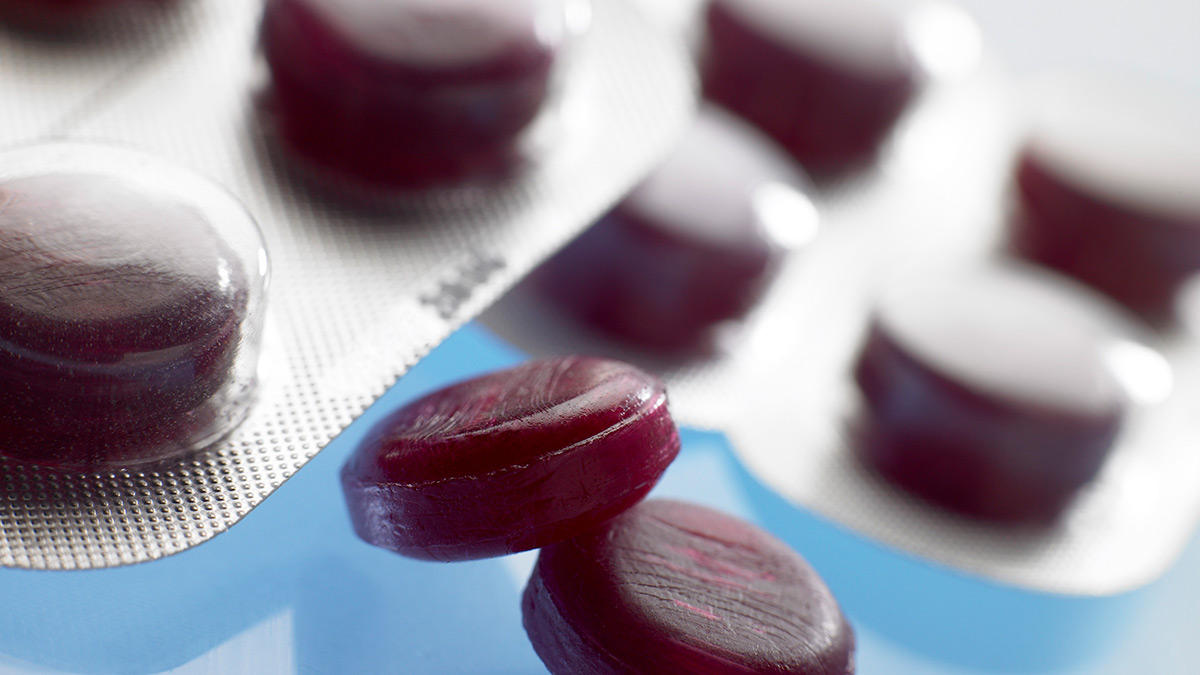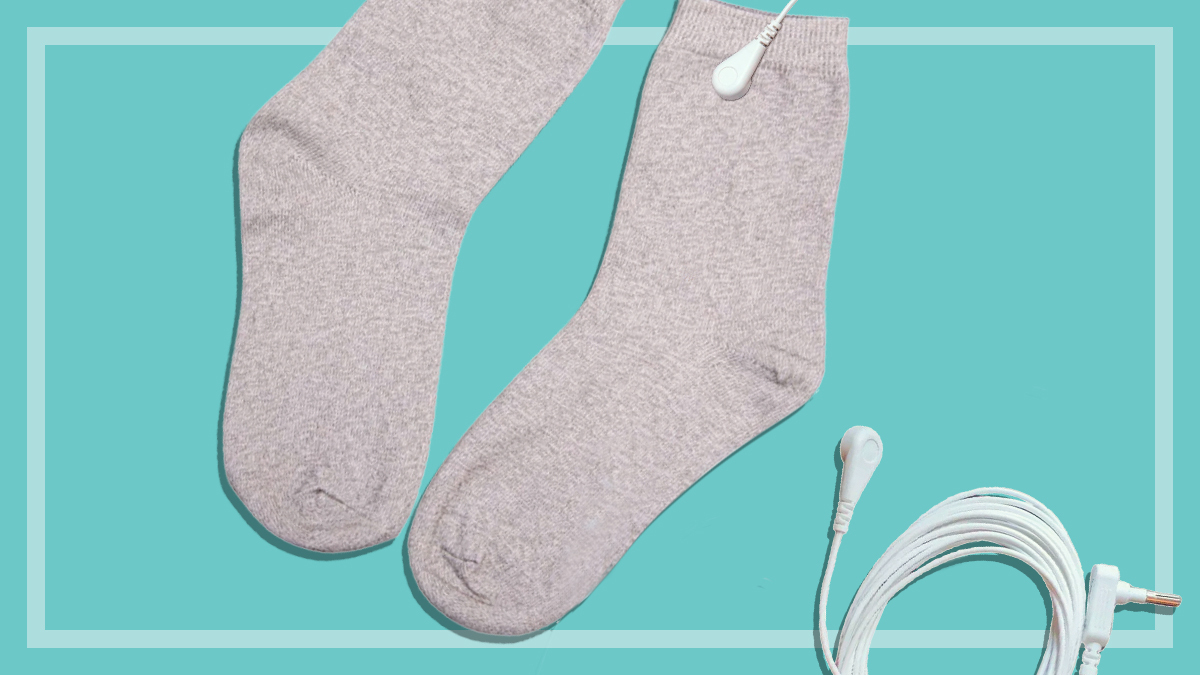Get our independent lab tests, expert reviews and honest advice.
Will a lozenge cure my sore throat?

A sore throat can feel like a thousand tiny knives scratching you every time you swallow. Then there’s the extra special pain of coughing – excruciating!
On this page:
- Do throat lozenges work?
- Can throat lozenges help cure your cold?
- The causes of sore throats
- Are throat lozenges safe during pregnancy?
- Natural remedies for sore throats
So with throat lozenges promising a world of relief, it seems like a no-brainer to just pick up a pack and start chain-chewing your way through the pain. But are cough lollies really anything more than glorified sweets?
Cold, flu and COVID-19: It’s very difficult to distinguish between the symptoms of COVID-19, influenza and a cold. If you have symptoms such as a sore throat, headache, fever, shortness of breath, muscle aches, cough or runny nose, you may need to self-isolate and to be assessed by a medical professional. You should also get tested for COVID-19.
Do throat lozenges work?
Throat lozenges generally contain painkillers, antibacterial agents, antitussives, pectin, menthol and/or eucalyptus. We take a closer look at each ingredient to see how effective it is in reducing sore throat symptoms.
Painkillers
Benzydamine hydrochloride and flurbiprofen are painkillers that belong to the group known as NSAIDs (non-steroidal anti-inflammatory drugs) that help reduce swelling.
A number of good-quality studies have shown that flurbiprofen lozenges and benzydamine hydrochloride given as a spray or gargle provide effective relief from sore throat symptoms, including difficulty in swallowing.
Antibacterial agents
Amylmetacresol, cetylpyridinium chloride, dichlorobenzyl alcohol and hexylresorcinol are antibacterial agents that help fight against disease-causing bacteria.
But the majority of sore throats are caused by viral infections rather than bacterial, so for the most part antibacterial agents in lozenges aren’t going to help.
The majority of sore throats are caused by viral infections rather than bacterial, so for the most part antibacterial agents in lozenges aren’t going to help
Anaesthetics
Local anaesthetics numb the area they’re in contact with and provide temporary relief from soreness. Lignocaine hydrochloride and benzocaine are used widely in medical and dental practice for numbing the mouth and throat during minor surgical procedures, or when a tube must be inserted into the windpipe. Benzocaine, lignocaine hydrochloride, benzydamine hydrochloride and hexylresorcinol also have local anaesthetic properties.
Antitussives (cough suppressants)
Pholcodine and dextromethorphan hydrobromide are antitussives that are intended to help suppress dry, unproductive (non-phlegmy) coughs, which can contribute to making your throat sore. But a wide-scale review of trials testing antitussives (mainly dextromethorphan) found that they were no more effective than a placebo for treating coughs in most cases. And a much higher concentration of dextromethorphan was used in the trials than is found in throat lozenges.
Menthol/peppermint
Menthol is made synthetically or obtained from mint oils. It’s the component of peppermint oil that’s thought to be responsible for most of its therapeutic properties. It gives a cooling and soothing sensation when you inhale or eat it, thanks to its ability to chemically trigger cold-sensitive receptors in the skin. But the effect of nasal decongestion from menthol is subjective – studies show that although people feel decongested after inhaling menthol vapour, there’s no actual improvement in the nasal airway when airflow is measured.
Eucalyptus
Just like menthol, eucalyptus is thought to act as a nasal decongestant. However, there’s a lack of controlled, clinical studies to support its effectiveness.
Pectin
Pectin is commonly used as a thickening agent in foods like jam and jelly. In throat lozenges it’s used to coat the throat, and in doing so has a soothing effect in much the same way as a teaspoon of honey would.

Can throat lozenges help cure your cold?
Many throat lozenges claim to have effects that extend beyond soothing a sore throat to the relief of cold and flu symptoms generally. They all have one or more of the following ingredients in common:
Echinacea
Echinacea is thought to help boost the immune system and alleviate symptoms of the common cold. Its preparations can differ greatly depending on the type and parts of the plant used and the manufacturing methods, however, and the overwhelming majority of products haven’t been tested in clinical trials. A Cochrane review of echinacea found that some preparations might be effective for the early treatment of colds in adults, but results aren’t consistent. Beneficial effects of other preparations might exist but haven’t been shown in good-quality trials.
Vitamin C (ascorbic acid)
Vitamin C appears in throat lozenges in various forms, including sodium ascorbate and calcium ascorbate dihydrate. It’s thought that it can help reduce the duration of the common cold. But a Cochrane review of vitamin C found that it didn’t show any benefit in doses up to 4g daily. The dose of vitamin C in individual throat lozenges sampled by CHOICE ranged from 10mg to 100mg.
Zinc
Zinc is thought to reduce symptoms of the common cold, including a sore throat. A 1999 Cochrane review found that evidence was inconclusive as to whether zinc lozenges were an effective treatment for symptoms of the common cold. Since then though, several new studies have shown that treatment with zinc lozenges does significantly decrease cold duration. It’s likely that the results are conflicting because the dose and formulation of the zinc used has an influence over effectiveness.
The causes of sore throats
Most sore throats are caused by viruses, with cold and flu viruses being the main culprits.
Viral vs bacterial infections
If your sore throat is a minor part of a typical cold, it’s likely to be caused by a viral infection. Viral sore throats are contagious and you can pass them on to someone by coughing and sneezing. Viral sore throats won’t respond to antibiotics.
Sore throats can also be caused by infection by bacteria, most commonly streptococcus (this infection is referred to as “strep throat”). Because strep throat can occasionally lead to rheumatic fever it’s best treated with antibiotics, but it needs a lab test to accurately diagnose it.
Other causes
Hayfever and other allergies may irritate the sinuses, causing post-nasal drip (drainage that runs down the back of your throat) and irritation of the throat, especially at night.
Low humidity, smoking and air pollution can all make the throat sore.
People who breathe through their mouth at night because of nasal congestion often get a sore throat that improves as the day progresses.
What causes a sore throat?
- Most sore throats are caused by viruses, with cold and flu viruses being the main culprits.
- Hayfever and other allergies may irritate the sinuses, causing post-nasal drip and irritation of the throat, especially at night.
- Low humidity, smoking and air pollution can all make the throat sore.
- People who breathe through their mouth at night because of nasal congestion often get a sore throat that improves as the day progresses.
Are throat lozenges safe during pregnancy?
Always discuss medicine use while pregnant with your doctor or pharmacist. Lozenges that contain the painkiller benzydamine should not be used while pregnant, unless otherwise advised by your doctor.
Lozenges that contain local anaesthetic and antibacterial agents may be used in pregnancy, but excessive use may cause unwanted side effects such as diarrhoea.
While not a lozenge, iodine-based throat gargles should be avoided while pregnant as they may affect the thyroid function of you and your baby.
Alternatively, you could try natural cold and flu remedies such as gargling with salt water or a warm honey and lemon drink.
Natural remedies for sore throats
Taking painkillers (for adults) is an effective way to relieve the pain and discomfort of a sore throat. But if you’d rather not take any medication, the following might also help:
- Drink warm liquids. Hot water with honey and lemon is a time-honoured remedy.
- Gargle with warm salt water (half a teaspoon of salt in one cup of water).
- Suck on ice.
- Use your air humidifier, if you have one.
A sore throat usually resolves itself within three to four days, and it’s unusual for one to last beyond a week. If it persists, or your symptoms include severe difficulty swallowing or breathing, a fever or tender or swollen lymph glands in the neck, see your doctor.






